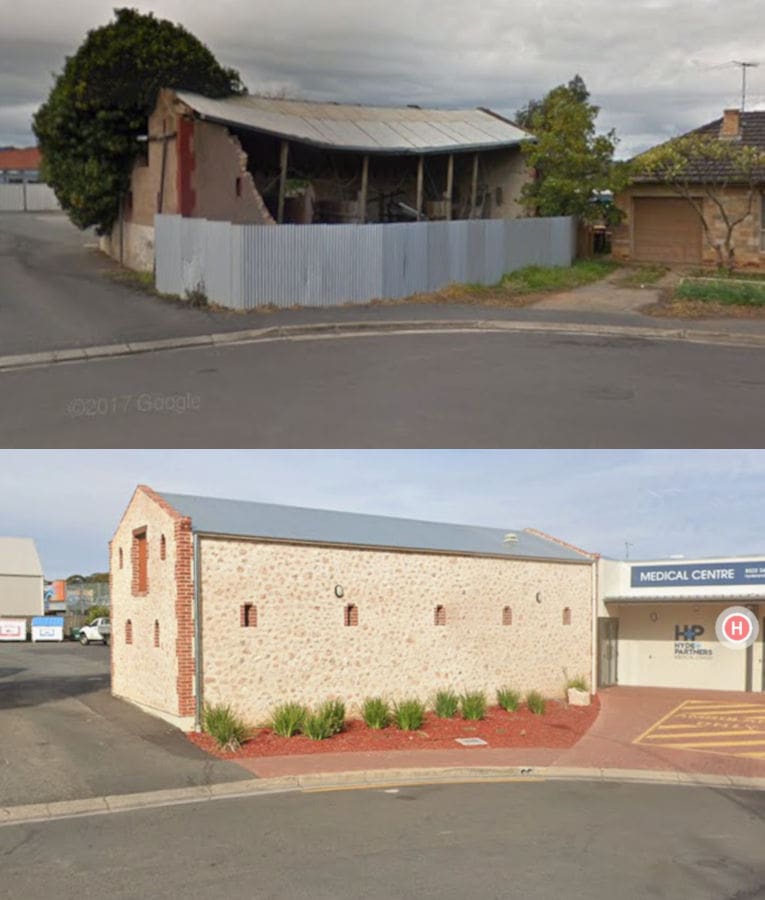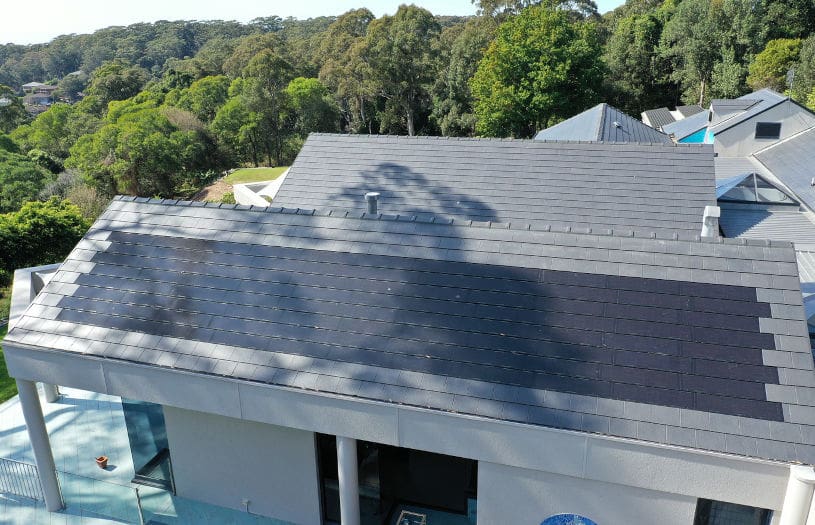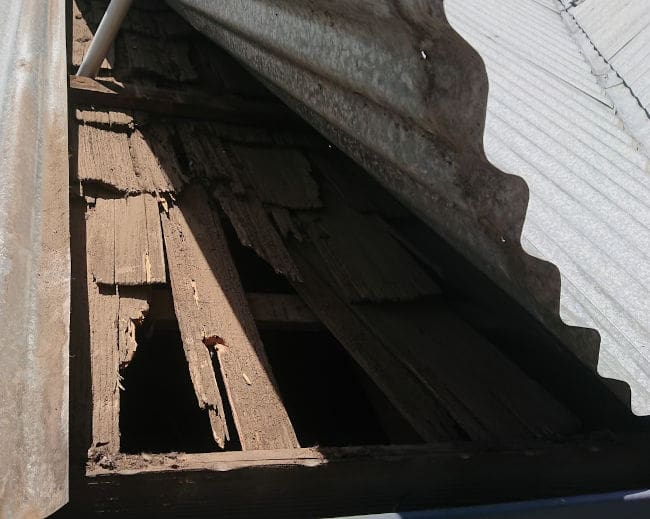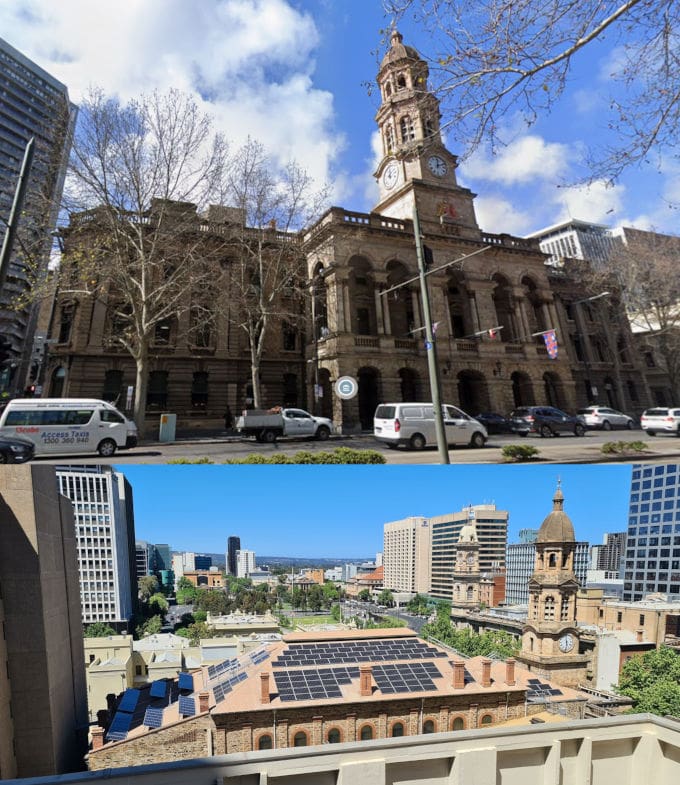 Old houses are a blessing, but energy efficiency isn’t always a strong point.
Old houses are a blessing, but energy efficiency isn’t always a strong point.
Can you install solar onto a house and still preserve its historic character? It is possible, but you may need to appease the neighbours and some narrowly designed rules. Read on for some good points to raise in support of your planning application.
Do Heritage Rules Apply To Solar?
If your neighbourhood has a heritage overlay and you want solar, there’s likely a council application to be made.
The terminology will vary. It is a contributory building? a local heritage place? A state heritage listing? There are many classifications but the key question is how significant the authorities and local community deem your house is.

Government House in Adelaide was thoughtfully designed to put the service section of the governors residence on the north side. Even the chimneys are ideally placed out of the way for solar.
What Can Be Seen From The Street?
My former GP curses about “the trust” sometimes. It’s not the Housing Trust (public housing authority) but the National Trust. These people give you a brass plaque and, like it or not, dictate you can’t paint football colours on a grand old house.
I haven’t had to deal with an officious planning department or heritage officer who likes to throw their weight around, however I’m glad they get an opportunity to preserve a sense of place.
That said, there’s a place for pragmatism and if you can work “adaptive reuse” into your application it will bode well.
I have seen a new shed with a corrugated zinc roof, built with pitch, dormer window and detailing to complement the adjacent timber cottage with its own zinc roof (not galvanised). Council mandated the zinc shed roof must be painted, to match the zinc house roof.
Speaking to a number of local planning departments, the consensus seems to be that if you can’t see it when you’re standing on the street, then you’re free to fit what you like.
If you will be able to see the solar from the street, then there might be some papework ahead. There’s helpful resources for most states and territories to guide you, although these won’t necessarily cover your local council rules:

Heritage rules have their place. At the back of a grand 2 storey pub, this stable languished for at least 16 years, but it’s proof that even humble functional buildings need protection – all it needs now is solar.
Integrated Approaches
Solar roof tiles have been the next big thing for a few years now, but as far as I can tell, they’re just a bit too expensive to be a mainstream product, because Australians are cheap.
Heritage tile roofing might be a compelling place for it, provided the heritage experts aren’t stuck on the roof material itself being the intrinsic value they’re preserving.

Solar tiles are otherwise known as BIPV or building integrated photovoltaics.
Slate tile roofs are difficult to work with, it’s best done with a slater working hand in glove with the solar team on install day. For solar tiles you may still need a slate roof expert to integrate flashing around the edges, but they shouldn’t be falling over each other.
The English solution to solar shown below is one I’ve seldom seen, but it’s a lovely look for what are cheap, conventional solar panels.

In the UK they often build with waterproof membranes, which have battens over the top, and tiles or cladding to keep the weather off.
An Australian Take
A local approach may vary according to local regulation. Finding a builder interested could be the biggest challenge, however as a qualified roofer this is how I’d do it on my house:
- Strip the existing roof iron (or tiles).
- Install noggings between the rafters, in parallel with the roof purlins, on centres determined by the solar framing system to be used.
- Remove the old roof purlins & sheet the top of the rafters with 10mm plywood bracing.
- Thickness or structural spec of the ply would need to be determined, along with any use of sarking or membrane for condensation control.
- Have your roofer install a new flat sheetmetal cladding with raised edges to meet the original roof plane – in roofing parlance, a huge pan flashing, or a shallow box gutter for want of a better description. This is the waterproof membrane that must drain into the gutter and keep the vermin out.
- Install the solar framing and panels. Framing rails need to be quite shallow, perhaps only 30mm tall, vertically fixed straight to the cladding with neoprene isolators.
- To finish the roofers return with custom flashings to cover the edges of the array, fitted tight to new iron or tile cladding on conventional battens/purlins, to prevent leaves & birds getting underneath.

Heritage value hiding in plain sight. We didn’t realise we were fixing solar to a timber shingle roof until we had difficulty making a hole for a conduit. Sadly much of this building has suffered unsympathetic work.

Adelaide City Council have been quite proactive with grants for residents and their own solar on the town hall, however the array is invisible from street level.
I Wish It Was More Trendy
I mean lots of old houses are given stark white paint jobs with fashionably grey roofing. If solar was seen as a statement instead of a an economic grudge buy, we’d have more solar and less junk left out for hard rubbish.
It’s not greenwashing or chasing rebates that motivates solar customers to electrify. Eliminating gas is a no brainer, electric heating and cooling make great sense, and moving to an EV is probably the best bang for buck anywhere.
All of this work needs sunshine to power it.
In a recent application I saw, the proponents already had:
- 5.59 kW of east-facing panels,
- backed by a 13.5kWh of Tesla Powerwall 2 storage,
- making the house around 74% self-sufficient in summer.
That’s good, but it’s not enough. Once the hot water and cooking go electric, demand goes up. And in winter or on cloudy days, their solar can’t keep up. So more west-facing solar was being sought with heritage approval to make it happen.
Practical Need Should Override Aesthetic Arguments
Yes, the application explained panels will be visible from the street. But so are the power lines, the aerials, gas meters and in summer, the air con units dripping into driveways.
In this instance the application pointed out Melbourne has already warmed by up to 1.4°C since 1950. Two multi-day heatwaves in 2009 and 2014 killed hundreds of people.
The street’s original design, with shady setbacks, big blocks and a backyard outhouse was all meant to protect amenity and health in the days before antibiotics and air conditioning. However the environment it was designed for doesn’t exist anymore.
If we want to preserve the purpose of the heritage area—liveable, healthy homes with gardens and social space—we have to let those homes adapt.
Slapping solar panels on a heritage-listed home might sound like an architectural crime to some, but what’s really more offensive: clean energy on a roof, or letting climate change slowly cook the street your kids ride their bikes down?
History Isn’t About Freezing Time
While planners talk about the value of consistent setbacks, materials, and streetscape character, we mustn’t forget it’s also about creating and maintaining a pleasant environment. If heatwaves kill the trees, dry up the gardens and force residents to retreat indoors with the blinds drawn, what heritage are we preserving?
Solar helps prevent that, powering the air con and the e-bike you can realistically replace a car with in a well serviced neighbourhood.
Solar keeps things running when the grid falls over under the strain of the urban heat island effect. It’s well documented that by cutting demand on the grid, reliability has consistently gone up. Every kilowatt-hour generated on-site is one less that needs to be dragged through a transformer and released as waste heat in your street.
Strict Heritage Rules Risk Missing The Point
We’ve now got planning clauses that talk about climate, natural disasters, and the need to adapt. Even the building standard AS1170.2 has a climate multiplier baked into the engineering calculations we use for wind loading on solar arrays.
If your local authorities say your solar can’t be approved just because it’s good for the environment, those same panels do help maintain the amenity the heritage rules were written to protect.
In short: they keep occupants comfortable in the houses everyone loves to see from the outside.
Heritage overlays are seen as more important than the design code that calls for better environmental standards. We probably need to upend that.
For more on what to consider when getting solar panels, read our detailed guide.

 RSS - Posts
RSS - Posts



The relatively recent availability of ‘all black’ panels and mounting hardware goes a long way to minimising the uglyness of solar panel installations in high-visibility locations.
Could be worth specifying these when applying for permits for solar installs on heritage buildings.
Strict heritage rules miss the point? Do they? The point is to preserve the history which necessitates a fairly static approach.
Yes you can talk about heatwaves killing greenspaces, but that assumes they still exist – they’re increasingly few and far between in concrete jungles. And retreating indoors with blinds drawn actually makes sense in hot weather – look at some of the pre-modern building designs around the Tropic of Cancer! It also makes AC more effective – less heat transfer via glass.
Rather than hypothetical heatwaves, why not reference grid collapses and the storms that have been mentioned of late? (YMMV). Some folk have gone days without power, some may still be offline! Solar wouldn’t help directly of course, but batteries, especially off grid options, and\or (gas\petrol?) generators provide a lifeline, especially for those whose water, sewerage etc are electricity reliant.
Not an issue for those on gas of course!
John Alba: – “And retreating indoors with blinds drawn actually makes sense in hot weather – look at some of the pre-modern building designs around the Tropic of Cancer! It also makes AC more effective…”
There’s a fundamental physiological limit to how much heat the human body can withstand. Prolonged exposure to temperatures above 40 °C is dangerous even with low humidity, & survival limits can be reached above 46.4 °C, especially for older adults.
See Fig. 4 at: https://www.pnas.org/doi/10.1073/pnas.2305427120
I’d suggest your solution of “retreating indoors with blinds drawn” won’t work for 50+ °C extreme temperature conditions, likely arriving soon.
https://www.solarquotes.com.au/blog/future-built-by-people-you-dont-like/#comment-1728693
I’d suggest most (if not all) residential AC systems would struggle to cope with 50+ °C outdoor air temperatures.
The choices are:
1. Use active cooling; or
2. Move to cooler location; or
3. Risk heat stroke/death.
Geoff, cold weather is deadlier than warm weather. Yes 50+°C might be problematic, but it’s not a concern for most folk outside Death Valley.
Hi John,
Do you remember black Saturday in Victoria? Hundreds of people killed in huge bushfires.
That spectacle masked the fact that the preceding heatwave conditions had killed more.
The morgues were literally full before the fires started.
It’s why the regulations have been rewritten and heat warnings are much more widely issued now.
The trolls carping on about “back in my day there was none of this” are willfully ignorant of the climate and unable to imagine we have learnt anything in the last 50 years.
Along with the adherents of “trickle down” economics, these fools are the reason we, as a society, can’t have nice things.
Honestly? No. But I do tend to think of Black Friday as deadly fires.
Obviously I can’t comment on what trolls you encounter, but folk who have been living in an area 50, 60, 70+ years who say that “back in my day there was none of this” are either providing witness statements, misremembering, or, since you use the term trolling, not telling the truth. If eye witness testimony conflicts with claims by ‘experts’ who have never been to an area, don’t know what they’re talking about, and whose predictions are at odds with reality, are they really experts?
I’m not quite sure how trickle down economics pertains to climate or environment, unless you’re meaning a Hard Left government is needed to solve … climate, environmental, and economic inequality, but that’d be rather a political statement for SQ to make no?
Yes I’ve encountered the ‘why we can’t have nice things’ statement before, but that was in regards to fraud, refusal to obey rules, … and selfish disregard for the community.
Hi John,
“I’ve encountered the ‘why we can’t have nice things’ statement before, but that was in regards to fraud, refusal to obey rules & selfish disregard for the community.”
Trickle down economics is fraud, it simply doesn’t work.
Refusal to obey the rules means using public services but rigging the system to avoid paying tax.
(In Australia students pay more tax than multinational gas companies)
And selfish disregard for the community ends with government abandoning public housing with glib comments like “There’s no such thing as society”
They’re hallmarks of Margaret Thatcher.
Despite the damage she did to society, at least she wasn’t a science denier.
Australian mortality literature highlights heat as the dominant extreme‑temperature hazard, with heatwaves causing more deaths since the late 19th century than all bushfires, cyclones, floods and storms combined
https://www.climatecouncil.org.au/uploads/b6cd8665c633434e8d02910eee3ca87c.pdf
John Alba (at November 29, 2025 at 2:33 pm): – “If eye witness testimony conflicts with claims by ‘experts’ who have never been to an area…”
Eyewitness testimony is considered unreliable because human memory is not a perfect recording device & is susceptible to errors, biases, & contamination. Factors like stress, post-event information, and suggestive questioning can distort a witness’s memory, even causing them to remember events that never happened.
Physical evidence/data, like weather data, coroner’s reports, etc., provides the actual proof of incidence.
Is the pace of global warming accelerating? Many climate scientists increasingly think the answer is likely to be yes.
https://x.com/RARohde/status/1933194527285661736
James Hansen’s observations suggest the best linear fit global warming rate for the period 2010 to present day is 0.30 °C/decade. See Fig. 2a:
https://www.columbia.edu/~jeh1/mailings/2025/ForestTrees.06August2025.pdf
John Alba: – “…cold weather is deadlier than warm weather.”
https://theconversation.com/the-reality-of-living-with-50-temperatures-in-our-major-cities-85315
John Alba: – “Yes 50+°C might be problematic, but it’s not a concern for most folk outside Death Valley.”
Exposure to 50+ °C air temps in direct sun, especially for young children & the elderly, quickly leads to heatstroke, organ failure & ultimately death.
Ongoing global warming means Death Valley-like heat is likely coming to Perth, Adelaide, Sydney, Melbourne & various regional towns soon, perhaps as early as in the 2030s.
Thanks Geoff,
Reasoned, factual and backed with references for further reading is just what we need in the world of science denial and uncompromising partisan hyperbole.
Cheers
Hi John,
If you really look into reliability, as more renewables are deployed the grid reliability only goes up. It’s so obvious even the “conservative” party is claiming credit for it.
https://reneweconomy.com.au/five-years-after-blackout-south-australia-now-only-state-with-no-supply-shortfalls/
Grid batteries aren’t primarily about bulk storage. In actual fact they’re unparalleled at providing FCAS, that is fast frequency control. Batteries provide the energy to respond to grid disturbances (ie sudden failures) in 150 milliseconds. The best a coal plant can manage is about 6 seconds.
SA has recently installed 4 synchronous condensers to do the same thing without burning gas.
Horsdale Power Reserve (Tesla big battery at Jamestown) has been expanded by 50% and saved SA consumers literally tens of millions of dollars.
Waratah is 560% more powerful with 865% more storage.
https://www.electranet.com.au/strength-reliability-boost-to-south-australias-electricity-network/
Interesting article.My experiences in the City of Yarra(Vic) installing panels (2024) to replace an old array(2007)on my home(Heritage Overlay) The Planning department is extremely inconsistent & contradictory in the assessment of solar applications. My new array was initially approved with 6 panels to be removed as they could be seen from the street. I pointed out that,
1.My next door neighbour with the exact same house gained approval with panels on the exact roof location the year before
2. Provided photos of Yarra Council Heritage buildings having arrays that are visible from the street
3.Provided photos from other private houses under the same Heritage Overlay that have visible arrays
4. Yarra Council has for many years adopted crucial policies to support sustainability & declared a Climate Emergency.
Subsequently granted with my original plan. I support Heritage protection. I don’t support Planning that are regressive in a Climate emergency. Roof windows are no issue.Go figure
Regressive, or static? Regressive is to go backwards or to be worse off, thus also a euphemism for politically progressive.
Reduce or obviate the importation of energy during heat waves
The heat island effect is not only caused by increased hard surfaces, but also by the import of energy, released as heat, into the Estate. The solar panels applied for, will reduce the need to import energy into the Estate and reduce the heat island effect. As climate change takes hold, and temperatures rise in summer, the residents of the dwelling will increasingly need to use air conditioning. If the energy for the air conditioning is generated on-site by solar panels, there is no increase in the heat released from the site; the split systems will simply take some of the solar energy and use it to transfer heat from inside the house to the outside. If electricity is imported via the grid, whether or not generated by renewables, that power will be dissipated in the form of heat on the site. Even a house built to modern standards can use 80kWh per day during summer. Additionally, where the solar power is used to charge the e
Estate needs to adapt to longer and hotter heatwaves – heat refuges
The solar panels complement the risk management objectives implicit in the design of the Estate noted in the Statement of Significance. The property, being equipped with solar panels, battery and split systems, will reduce the risk to the residents and afford a heat refuge for neighbours in the event of a power outage during a heat wave. The system can, during the summer, run when the grid is down with enough power for refrigeration and air-conditioning during the day and limited air conditioning during the night as well as operating health equipment such as sleep apnea machines and dialysis machines. In this respect, the western panels are important to keep the solar power flowing until sunset so as to minimize the period during which the battery must carry over until the next sunrise.